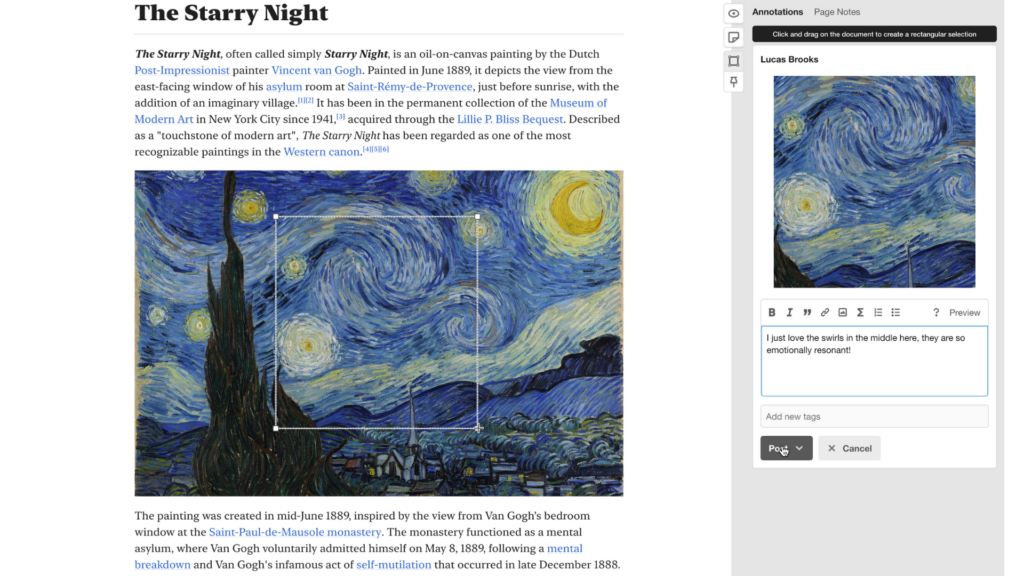Introducing Image Annotations: Bringing Visual Content into the Conversation
Hypothesis changed how students read—now we’re changing how they see.
With Image Annotations, we’re making the entire page—not just the text—a place for conversation, analysis, and deeper learning.
That’s why we’re excited to launch Image Annotations, starting with support for annotating images embedded in PDFs. It’s a powerful step toward making every part of your documents—not just the text—a space for learning and conversation.
Why Image Annotations Matter
In education and research, visual content often carries just as much meaning as written words. A data chart in a biology paper. A historical photograph in an archive. A scanned textbook page full of diagrams. Until now, there’s been no easy way to comment directly on these visuals within Hypothesis.
Studies in learning science confirm that students retain more when they engage with material in multiple modalities. Image annotation encourages active learning, supports visual literacy, and helps students practice interpreting visual information—critical skills across disciplines from science to the humanities.
With Image Annotations, you can now:
- Engage with non-selectable text and images in scanned PDFs
- Annotate graphs, maps, and diagrams in research papers and textbooks
- Support visual literacy alongside traditional reading comprehension
This feature opens up new ways to help students think critically about what they see—not just what they read.
How Image Annotations Work
In this first release, users can place pins and rectangles directly on images within PDFs. These pins function just like text highlights: they anchor your note and connect to the Hypothesis sidebar where discussion happens.
- Each annotation is visually linked to a specific part of the image
- Pins scale and move correctly when users zoom in or out
- Works seamlessly across both native and scanned PDFs
- Easy to use—no advanced tools or training required
Coming soon: users will be able to draw bounding boxes, use freeform tools, and annotate images across a wider range of platforms, including web pages and image viewers.
Who Benefits—and Why it Matters
For Students
- Ask questions directly on images and diagrams
- Make visible connections between visual data and course concepts
- Engage more deeply with complex materials
For Instructors
- Guide student attention to specific parts of an image or chart
- Leave targeted feedback on visual assignments
- Reinforce critical observation and analysis skills
For Researchers and Readers
- Annotate archival scans, scientific visuals, and technical diagrams
- Create shared insights around image-heavy content
- Enable richer peer collaboration across visual materials
What’s Available Now — and What’s Next
Available Now
- Pin-based annotations on images in PDFs
- Full Hypothesis sidebar integration
- Compatibility with native and scanned documents
Coming Soon
- Bounding box selections
- Image annotations on websites and in viewers
- Drawing tools for custom highlights
- Enhanced accessibility with alt text and screen reader support
See It in Action
Watch how easy it is to start annotating images.
Whether you’re teaching with visuals, analyzing data, or interpreting primary sources, Image Annotations bring the full page into the conversation.
Hypothesis: Evolving With You
We’re building tools that reflect how people learn today—not just through text, but through everything they read, see, and share. Image Annotations are just the beginning of expanding the boundaries of collaborative reading.
Try Image Annotations Today
Image Annotations are available in supported Hypothesis-enabled PDFs.
